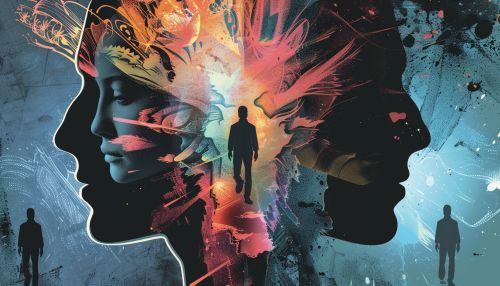Id, ego and super-ego
Introduction
The psychoanalytic theory of personality, proposed by Sigmund Freud, suggests that human behavior is the result of the interaction among three component parts of the mind: the id, the ego, and the super-ego. This tripartite model of the mind is one of Freud's most significant contributions to the field of psychology.
The Id
The id, derived from the Latin term 'id' meaning 'it', is the primitive and instinctual part of the mind that contains sexual and aggressive drives and hidden memories. The id operates on the pleasure principle, which demands immediate gratification of needs without considering the reality or consequences.
The Ego
The ego, from the Latin term 'ego' meaning 'I', acts according to the reality principle. It seeks to please the id’s drive in realistic ways that will benefit in the long term rather than bring about grief. The ego, while conscious, also has unconscious aspects such as defense mechanisms and unconscious cognitive processes.
The Super-Ego
The super-ego, functioning on the morality principle, reflects the internalization of cultural rules, mainly taught by parents applying their guidance and influence. The super-ego aims for perfection, comprising two sub-systems: the conscience and the ideal self. The conscience can punish the ego through guilt, while the ideal self is an imaginary picture of how you ought to be, and represents career aspirations, how to treat other people, and how to behave as a member of society.
Interactions of the Id, Ego, and Super-Ego
The id, ego, and super-ego are not separate entities with their own territories in the mind, but rather they are an interplay of psychic forces that interact and conflict with each other. The ego has the task of bringing the id and super-ego into harmony and to mediate conflicts between them.
Development of the Id, Ego, and Super-Ego
Freud proposed that the id is present at birth and forms the basis of personality. The ego and super-ego develop as a person grows. The ego begins to develop during the first three years of a child's life. Finally, the super-ego starts to emerge around the age of five.
Freud's Structural Model in Modern Psychology
Freud's structural model of the id, ego, and super-ego is still widely discussed in academic psychology, but it has been replaced or heavily modified by more modern theories, such as those of Erik Erikson and Jean Piaget. It remains a powerful tool for the conceptualization of the human psyche and its workings, although it has been criticized for its lack of empirical support.
See Also


